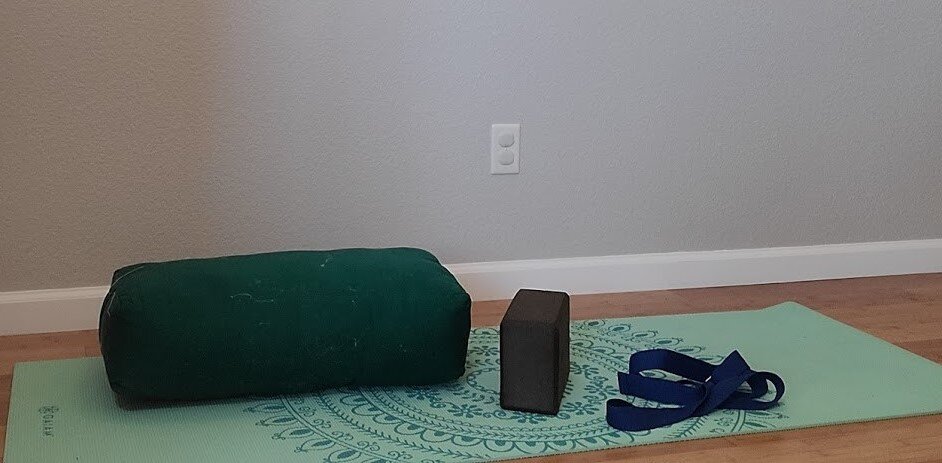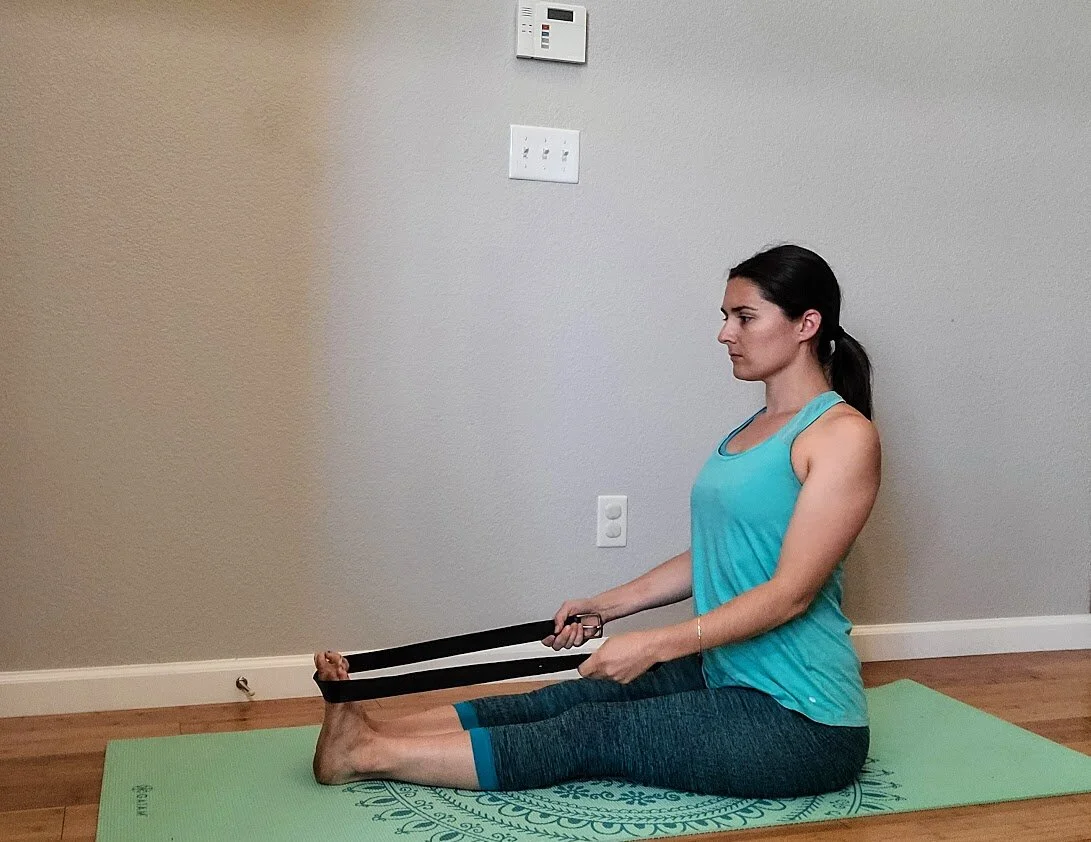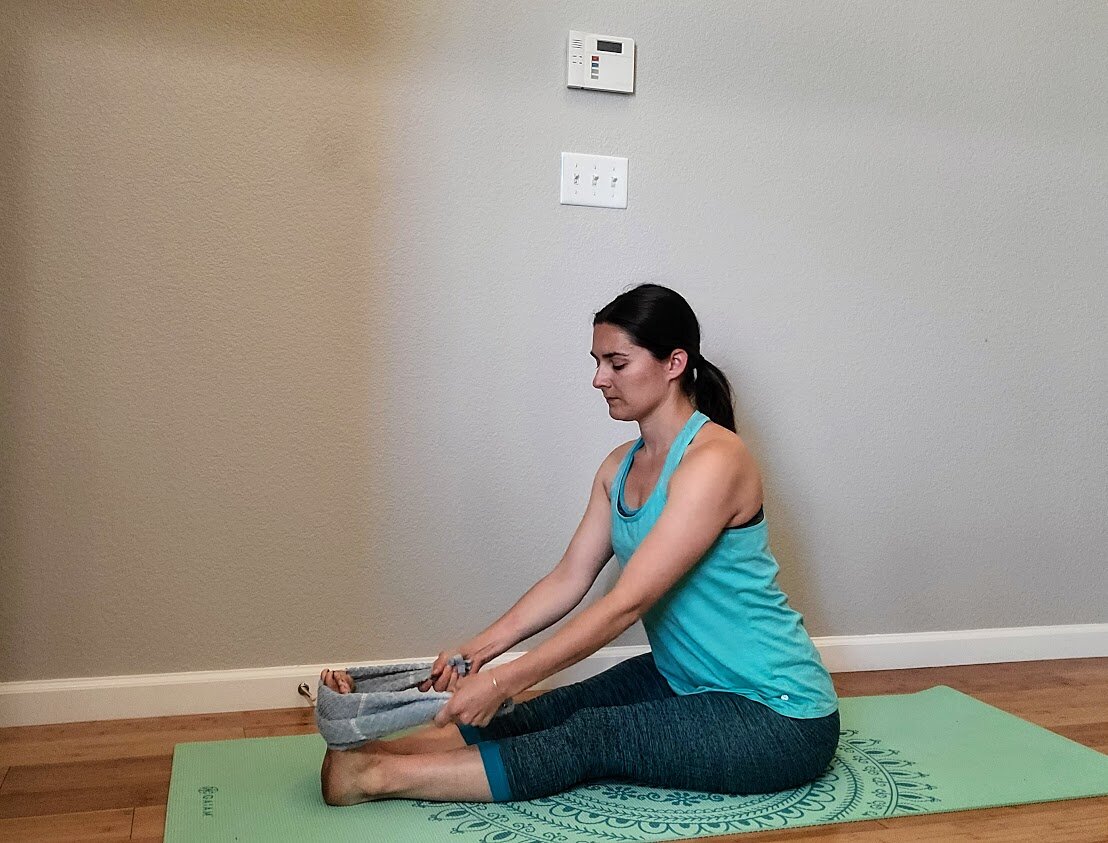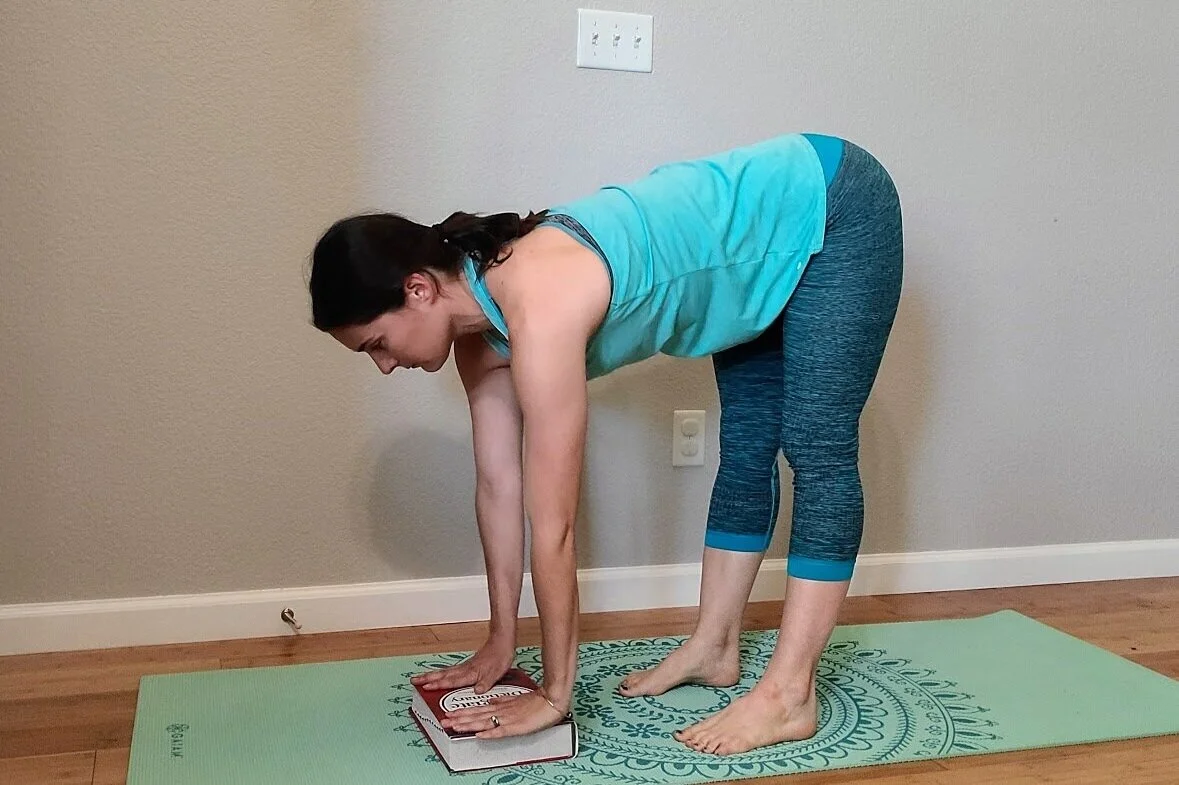Yoga Prop Substitutes
/Props are beneficial when practicing yoga. People usually think props are only used for modifying yoga poses, but in truth they can improve the practice for everyone. So, what do you do if you don’t have any props? You substitute!
Here’s a look at some common props—and what you can use to substitute for them.
Yoga Mat
A yoga mat is generally seen as the symbol of yoga. You see people carrying their rolled-up mats down the street or slung over their shoulder. They are made from various materials; environmental and health concerns aside, they are often made of some combination of rubber and plastic. While most mats are typically similar in size, you can find extra-long sizes for tall people and those that are thicker (more than the typical 5mm) for more cushioning. Thicker mats require users to have a little more balance though because the extra cushioning is not firm—think balancing on a couch cushion—and your weight will distribute less evenly.
While you can still practice yoga if you do not have a mat, you may have to consider the style you want to practice, as some rely on a lot of movement and transitions, which will open you up to sliding and falling if matless.
Towel/Blanket
Towels or blankets are great in the fact that most people have them and they provide a little extra cushion for the body to move. However, on a hard surface like wood, they could slip and are very unstable. If you use a towel or blanket, one with a bit of texture (larger threads or pile) placed over a carpet is your best option.
Rug
You can find yoga rugs, so an area rug can be a great substitute for a mat. Area rugs are more stable and less likely to slip than towels, but the threads of the rug are generally smoother than a sticky yoga mat and your hands on could be more prone to slipping. So just be extra cautious if the texture of your rug doesn’t provide enough “stickiness.”
Go Without
If you don’t have a mat, you can go without one—say what?! Mats seem so ingrained in the image of yoga that it is hard to envision not having one under your feet, but they are not necessary. While it is true that the grip and texture of a yoga mat can help reduce slipping, yoga was practiced long before these rubber mats were invented. Feeling sand or grass, for example, under your feet can be a very rewarding and mindful experience. Even your flooring at home can offer opportunities to strengthen your feet and feel the ground as it is. Whatever you practice on, the key is to be safe. If you are on a hard floor protect yourself, especially your knees, and be aware of uneven or sharp surfaces or chances of slipping.
Many yoga poses can also be done from a chair or cushion/pillow on the floor. And remember that yoga isn’t just poses. You can work on breathwork (pranayama) or meditation without a mat and still be practicing yoga.
Straps
Straps come in 6-, 8-, and 10-foot lengths. The 6-foot strap is sufficient for most of your yoga needs, but if you are taller, you may consider a longer strap. Though it is most common to use a shorter strap, I advocate for having a longer strap as well. Iyengar yoga especially finds many uses for the longer strap to help you access more opening or support in poses.
However, everyone is able to do yoga without spending additional money on props. Below are some common strap substitutes.
Belt
A belt is the most common replacement for a yoga strap. A leather belt actually provides more durability and resistance than a strap. A belt, however, does not have a D-ring buckle like a yoga strap, which leads to some limitations with tightening, but it can make loops through its holes or using the belt’s frame.
Belts are often not as long as straps and range between 3 and 4 feet, which may reduce their usefulness, especially if you are taller. It is common to use a strap for stretching your hamstrings; in order to do so you will need the belt to wrap around the ball of your foot and be long enough to hold one side in each hand, preferably while your legs are perpendicular to your torso (either seated or laying down).
Bathrobe belt/tie
Like a belt, you may have a bathrobe with a tie already. It is an easy replacement but is also likely to be shorter than a yoga strap and will not have the D-ring buckle. There is also more variation in material here. A microfiber tie will be less sturdy and provide less traction than a thicker terrycloth bathrobe belt. Unlike a leather belt, it will not have holes but the belt itself can usually be tied and knotted to create certain loops.
Towel
Towels are also commonly accessible but are more limited as a replacement for a yoga strap. A hand towel can be used for certain poses where just a little extra length is needed, like when you are a couple inches from bringing your hands to your toes or clasping your hands together.
A bath towel is longer but it also brings additional bulk. You could use a rolled-up bath towel to stretch your hamstrings but the thickness and weight of the towel makes it cumbersome and less practical, and therefore I don’t recommend using them unless absolutely necessary.
Blocks
Though there are many uses for yoga blocks, they are often help bring your hands to a stable surface. For example, if you are in a forward fold and can’t touch the ground you can use blocks to rest your hands on. Blocks are generally about 9 inches long, 6 inches wide, and 4 inches deep. You can position the block to rest on different edges based on the level/height that you need. Yoga blocks can be made from different materials like foam, cork, or wood, and therefore their firmness and weight will vary. If you are often moving the block around during your practice or use it to rest your head on during certain poses, you will likely want to avoid wood.
If you don’t have a yoga block here are some possible substitutes:
Books
This is a commonly referenced substitute that is effective only for bringing your hands to something stable. For example, you can rest your hands on books in a forward fold. You can choose how many and what thickness you need to achieve the height and support you want. However, I find books relatively impractical, as they can be heavy and cumbersome to move around during a practice.
Chair/stool
Chairs and stools are taller than a block but offer support in poses where you don’t want to go too deep. They can be heavy to get into place, and may need to be propped against a wall to make them stable, but I prefer a chair’s versatility over books.
Rolled-up blanket or neckroll pillow
These options are not as useful when you are trying to “raise the ground up to you,” but they are helpful if you are looking to use a yoga block for resistance and support in a pose. For example, you can put a block between your thighs to help your inner thighs engage and support your lower back. Substituting a block with a book wouldn’t be practical in this case; this is where a rolled-up blanket or pillow could provide the cue for your body to engage.
Bolsters
Yoga bolsters come in various sizes and shapes but they are often rectangular and about 6 inches deep/high. The most common use for a bolster is to allow you to sit up higher off the ground, which will help relieve the hips and knees. A bolster will help you sit without having to constantly engage your hip flexors and inner thighs, allowing your knees to open to the outside more comfortably. This also takes strain off the lower back and can help you lengthen your spine.
Firm pillow
Bolsters are fairly firm and bring you several inches off the ground. Many pillows around the house will quickly squish under your weight if you sit on them, which limits their effectiveness as a substitute. However, a firm and thick pillow can be just as effective as a bolster.
Blankets
A folded-up blanket can be a challenging substitute for a bolster because it usually takes several stacked blankets to get the height just right, but it has the right firmness and some people may find enough relief in the hips when just using one. As blankets can be helpful in other poses (for example, cushioning your knees when you are on hands and knees), I find them more versatile than bolsters. If I had to choose between the two, I would lean toward the blanket. Even though it is considered a replacement, it is also a very helpful prop in its own right.
You can also use bath or beach towels as you would a blanket. Fold it a couple of times to provide the appropriate height and support.
These are only some of the most common yoga prop alternatives. Get creative and be open to trying something new, with or without props. Doing so will deepen your understanding of where you are in your yoga journey—and where you could go.








